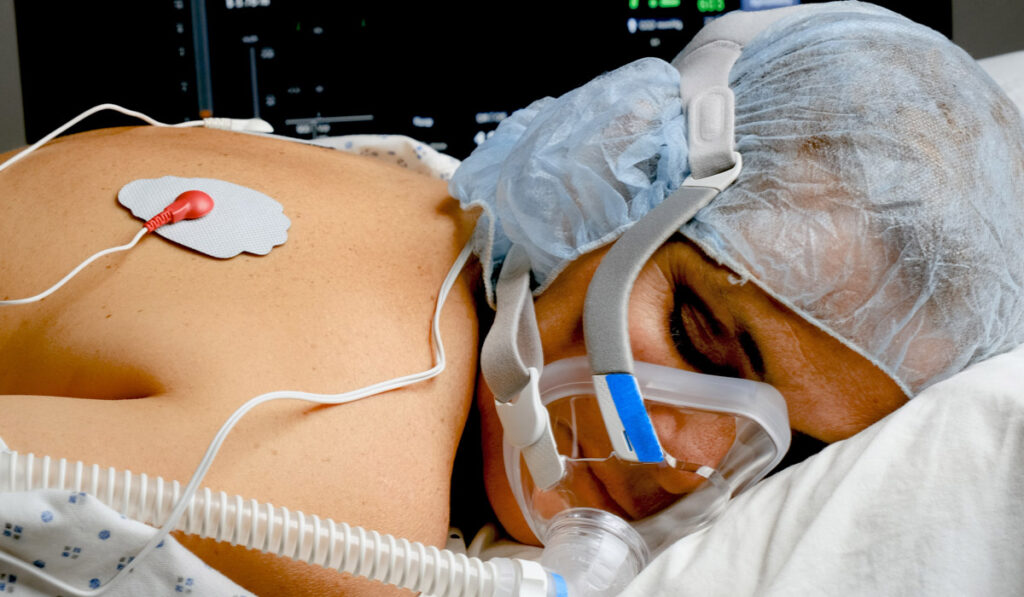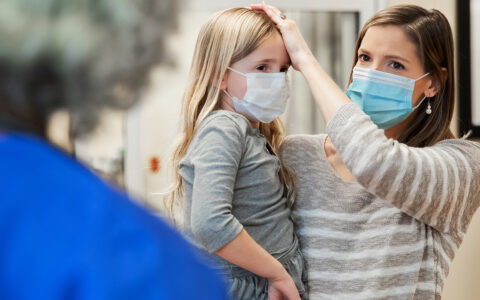Prone positioning has been used since the 1970s in the care of patients receiving mechanical ventilation for acute respiratory distress syndrome, and the practice was continued early in the COVID-19 pandemic for patients with and without mechanical breathing assistance.
Existing guidelines recommend awake prone positioning for patients with COVID-19 as a safe and beneficial practice, despite a lack of evidence from randomized clinical trials, and clinicians largely assumed that the clinical benefit for intubated patients could be extrapolated to non-intubated patients.
Now, a study led by Vanderbilt University Medical Center researchers and published in JAMA Internal Medicine has found that awake prone positioning offers no observed clinical benefit among patients with COVID-19-associated hypoxemia who are not receiving mechanical ventilation. The study also found evidence of worsened clinical outcomes among patients who underwent the intervention.
“With the hope of increasing survival in COVID-19 patients, many hospitals adopted the recommendation of prone positioning to potentially prevent the need for mechanical ventilation,” said Todd Rice, M.D., an associate professor in the Division of Allergy, Pulmonary, and Critical Care Medicine at Vanderbilt. “When people were flipped on their stomachs, their oxygen levels were better and some of the patients would say they felt they were breathing better.”
These surrogate outcomes, while promising, did not address critical questions the Vanderbilt researchers hoped to answer.
“There are a number of previous studies of COVID and non-COVID patients that show the oxygen level improved with prone positioning, but we weren’t sure that it improved overall outcomes,” said Edward Qian, M.D., a pulmonary and critical care fellow at Vanderbilt and lead author of the study.
“Do people survive? Do they have to go on the ventilator? Do they get out of the hospital?” Qian continued. “We thought those were more important outcomes, from both the physician and the patient standpoint, than whether they were just breathing better.”
“With our study we said, ‘Let’s be cautious, there may be a downside.’ You need to be thoughtful about it and not apply it with a wide swath across all patients that are hospitalized with COVID.”
Unexpected Results
The pragmatic controlled trial was conducted at Vanderbilt and NorthShore University HealthSystem between May and December 2020. A total of 501 patients were included in the study, with an average age of 61 years.
Baseline characteristics were comparable among 258 patients assigned to the intervention group and 243 patients assigned to the usual-care group. The level of oxygen delivery at enrollment via standard nasal cannula, high-flow nasal cannula, or non-invasive positive-pressure ventilation was also similar between the two groups.
Nurses estimated that patients in the intervention group spent a median of 4.2 hours per day in the prone position over the first five days compared with zero hours per day in the usual care group.
“We used the World Health Organization ordinal COVID scale, modified slightly, to measure outcomes,” Qian explained. “We knew our intervention would be impacting oxygen, so we measured rate of disease progression to mechanical ventilation and mortality.”
Within five days of enrollment, 19 patients in the intervention group and nine patients in the usual care group had died. At day 28, 56 of 239 remaining patients had died in the intervention group and 47 of 222 patients in the usual care group. There was no evidence of a difference in either ventilator-free days (median, 28 days) or the number of patients progressing to mechanical ventilation during the study (30 patients in the usual care group versus 31 in the intervention group).
“There are a number of previous studies of COVID and non-COVID patients that show the oxygen level improved with prone positioning, but we weren’t sure that it improved overall outcomes.”
Unanswered Questions
While there is no direct data to prove it, Rice says it is highly probable that prone positioning worsened patient outcomes by study day five.
“We have a number of speculations,” he noted. “Early in the disease process, by moving the patient, are you instigating tachyphylaxis early and so the subsequent result of the prone positioning wears off?”
Previous guidelines failed to note any potential negative side effects of the positioning, Rice said.
“With our study we said, ‘Let’s be cautious, there may be a downside.’ You need to be thoughtful about it and not apply it with a wide swath across all patients that are hospitalized with COVID.”
The researchers are collaborating with other centers to pool their data and determine the overall effect of awake prone positioning. They aim to understand the pathophysiology of the intervention and identify subpopulations to be targeted for benefit.






